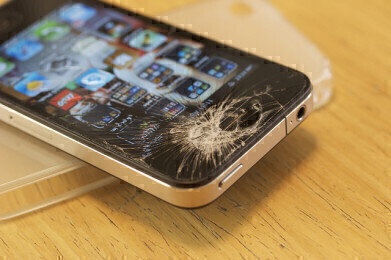News & Views
Japanese Scientists Unveil ‘Indestructible’ Glass
Nov 14 2015
Glass has become an integral part of our everyday lives. From reading spectacles, smartphones and shower panels to car windscreens, coffee tables and windows, it exists all around us. Unfortunately, this also means that we face the issue of broken glass on an all too regular basis. Until now…
At the University of Tokyo’s Institute of Industrial Science, a team of researchers has created an innovative new breed of hybrid glass that’s as strong as steel and virtually unbreakable. The findings have been published in the journal Scientific Reports and have made waves across the globe.
Shock, stress and shudders – this glass takes them all!
According to the scientists, the glass derives its extreme strength from its ability to be non-permanently deformed by external stress. This means that if a brick is thrown at the material, it simply maintains its structure as though nothing had happened. Material scientists refer to this measure of strength as the elastic modulus. The new glass is so exceptionally strong that its elastic modulus rating compares to that of steel.
Aluminium is the answer
So how did the scientists manage to invent such a material? The glass contains a significant amount of Al2O3 aluminium oxide compounds that are renowned for their extreme durability. This version of the aluminium oxide group is an extremely hardy mineral corundum that’s trumped only by diamonds on the Moh’s scale of hardness.
While in the past scientists have never been able to master the chemistry required to add Al2O3 aluminium oxide compounds to glass, this team of Japanese material scientists have finally succeeded. To achieve the feat, the team used oxygen gas to levitate a mixture of glass and alumina in the air. This allowed it to freely mingle without the disruption of nucleation points. The two substances were then melted together using carbon dioxide lasers to forge the ultra-hard 50% alumina glass. The result is perfectly thin, transparent, lightweight and optically outstanding glass!
“We are looking to commercialize the technique within five years,” reveals Atsunobu Masuno, University of Tokyo assistant professor and co-author of the paper.
Could the findings represent a new era of durability for glass laboratory equipment? In the article ‘Are Your Glass Volumetric Instruments Accurate?’ authors look at current equipment, and the immense importance of accurate measurements. Should unbreakable glass infiltrate the labaratory apparatus industry it could mean serious improvements across a myriad of scientific sectors.
Image via Flickr Creative Commons. Credits: Carrrrrlos
Digital Edition
Lab Asia 31.2 April 2024
April 2024
In This Edition Chromatography Articles - Approaches to troubleshooting an SPE method for the analysis of oligonucleotides (pt i) - High-precision liquid flow processes demand full fluidic c...
View all digital editions
Events
Apr 28 2024 Montreal, Quebec, Canada
May 05 2024 Seville, Spain
InformEx Zone at CPhl North America
May 07 2024 Pennsylvania, PA, USA
May 14 2024 Oklahoma City, OK, USA
May 15 2024 Birmingham, UK


















